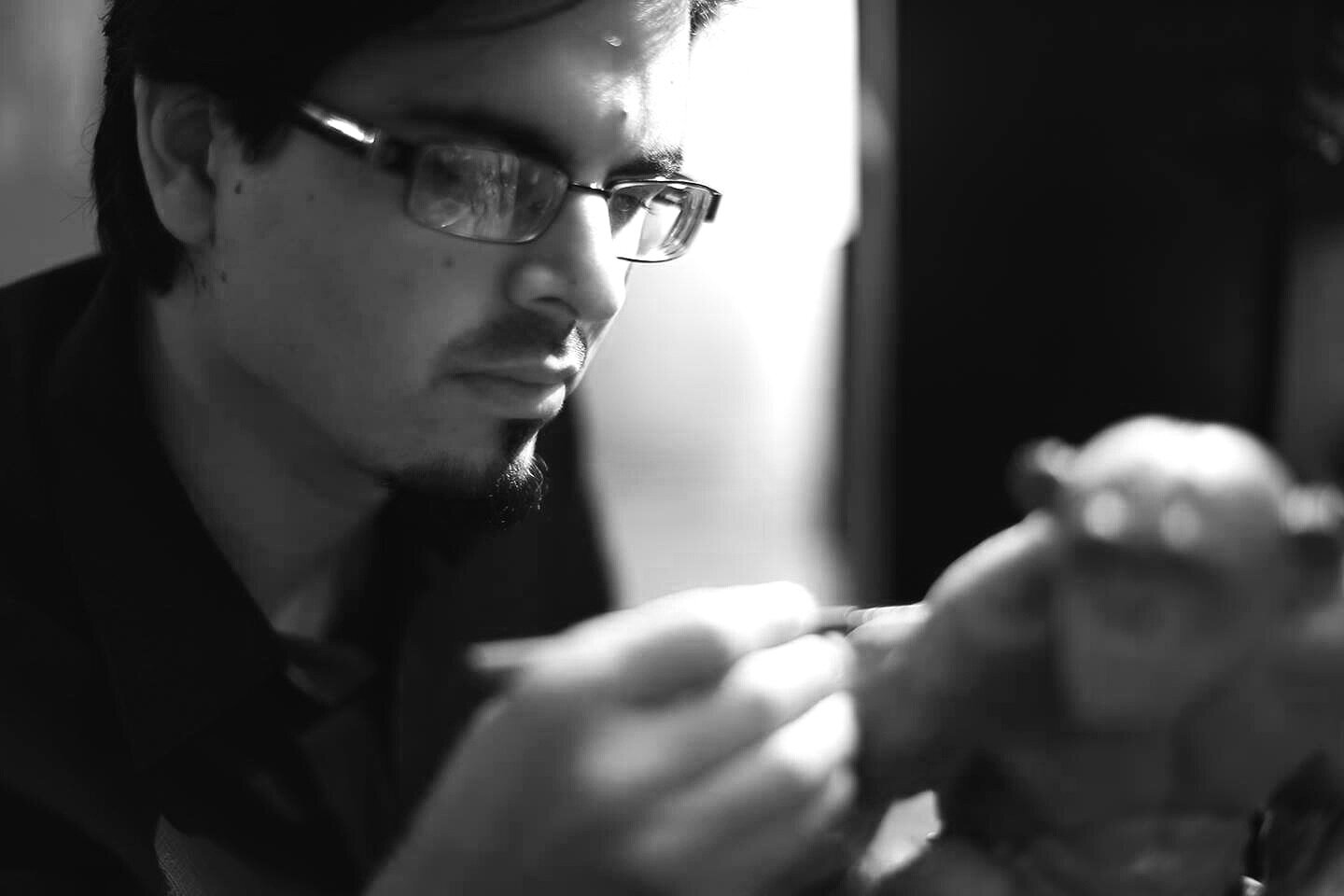Our Team
Gabriel Vinas
Co-founder, Art Director,
Sculptor, Co-Researcher
Bachelor of Fine Arts from the College for Creative Studies, Magna Cum Laude, 2014
Master of Fine Arts, Arizona State University, 2021
Ryan M. Campbell
Co-founder, Lead-Author, Research Director, Molding and Casting Technician
Bachelor of Health and Medical Sciences in Anatomical Science (Honors; First Class) from the University of Adelaide, 2018
Ph.D., The University of Adelaide, 2022
Maciej Henneberg
Senior Scientist, Supervisor
Ph.D., DSc, FRSB Fellow
Graduate of Adam Mickiewicz University,
Summa Cum Laude, 1976
Former Head of the Department of Anatomy and Human Biology at the University of the Witwatersrand, Johannesburg, S. Africa
Former Wood Jones Professor of Anthropological and Comparative Anatomy at the University of Adelaide,
Beginnings
In 2014, Professor Maciej Henneberg was asked by a young enthusiastic undergraduate student if he could mold and cast his replica of the Taung Child fossil – that student was Ryan M. Campbell. The model had been shown to him during one of the professor’s lectures, which was gifted to Maciej while he was the custodian of the original fossil at The University of Witwatersrand. Upon asking to duplicate the replica, Ryan was met with a response that would become emblematic of the man that would become not just his Ph.D. supervisor, but also a constant source of encouragement throughout his university career.
The professor said
“yes!”
The Taung Child is the type specimen of the species Australopithecus africanus, which was a monumental finding for the fossil record. The fossil fascinated Ryan, and he challenged himself to make a perfect copy of this replica using the mold-making skills he had developed from his love of special effects in film. This process involved carefully making a rubber encasing around the replica, which would be used to produce a perfect cast.
As he cast his replica, Ryan had a thought: “What if I brought him to life? What if I reconstructed the Taung Child like the models I had seen in museums that got me interested in human evolution in the first place?” With that question still fresh in his mind, Ryan found the Instagram page of the recent Bachelor of Fine Arts graduate, Gabriel Vinas. It was clear their interests were aligned as Gabriel had just mounted his thesis exhibition, which incorporated themes of human evolution. This showcased a mutual fascination with primates between the two would-be scientists and cemented a partnership that would last for years to come.
The images above, which were featured in Gabriel’s thesis exhibition, were the very ones that Ryan, many thousands of miles away, would ultimately find. Ryan sent Gabriel a message proposing a collaboration of breathing life into his casting of the Taung fossil. An enthusiastic “yes!” followed.
Now a product sculptor at Ford Motor Company following his graduation, Gabriel and Ryan met via video chat very regularly to reconstruct the Taung Child. However, it was not long until their first reconstruction was ready to be redone because of what they had learned. Maciej took note of the collaboration beginning to form between the two young biological anthroplogists, and decided to contribute as an expert consultant on the project. At this point, even if they didn’t know it, the foundations were being laid for a future research effort that would ultimately become Pithecus.
This new Taung (pictured right), and the differences between it and the previous one, made it clear to both Gabriel and Ryan that this was an area in science worth exploring. As such, in 2018 Gabriel resigned from his position at Ford Motor Company and enrolled at Arizona State University to pursue research full-time. Similarly, Ryan had enrolled as a PhD Candidate at The University of Adelaide under the supervision of Professor Maciej Henneberg. With their minds made up, they began to formally work towards restoring the appearance of Plio-Pleistocene hominids.
In the years that followed, their work matured into applying existing methods onto ancient hominid skulls and skeletons. This exposed the limitations of current methods and in most cases their outright unsuitability. These first two years of collaborative research, while taking up their new higher educational roles, culminated in a review article published in Frontiers in Ecology and Evolution. This publication served as the springboard for the Pithecus philosophy:
To develop methods for, and improving upon, the practice of hominid reconstructions for the betterment of the public’s understanding of science and to contribute to our growing understanding of what it means to be human.
A few months later, the team published their first research article in PLOS one. The manuscript was published on June the 4th, 2021, and marks the first of many future publications by the team and their associated colleagues. At Pithecus, we strive to continue testing existing methods, developing novel ones, and contributing to the scientific literature as well as sharing our reconstructions and discoveries with you.
We hope that you will enjoy our work, and return to us regularly as we grow our platform with more reconstructions, publications, and scientific information in the coming months. It is our sincere hope that you find this resource valuable and join us on the long journey ahead towards facilitating scientific education.















